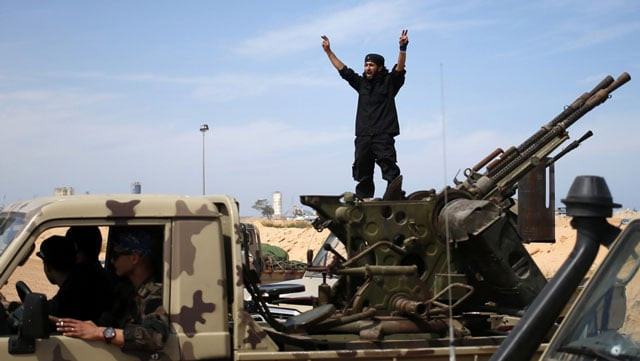
The US is said to have grossly overestimated the damage they had inflicted on IS during airstrikes on the militants’ oil production apparatus last year.
Just a few hours before the first IS suicide bomber blew himself up outside the Stade de France in Paris on November 12, US Army Colonel Steve Warren conceded at a press briefing that some American airstrikes disrupted IS oil operations for no more than a day or two, according to Bloomberg News.
Obama says will not relent in fight against Islamic State, urges Russia help
The US-based newspaper claimed that the Obama administration conducted airstrikes in Syria and Iraq on oil fields and other parts of a vast petroleum infrastructure only after it found and quietly fixed a colossal miscalculation.
According to officials of the US Department of Treasury, the terrorist group is making $500 million from oil a year.
“The Obama administration misunderstood the [oil] problem at first, and then they wildly overestimated the impact of what they did,” Benjamin Bahney, an international policy analyst at a US-funded think tank, said.
The analyst revealed that the radical revision on oil revenue came only after the treasury officials gained fresh intelligence on IS’ petroleum operations following a rare ground assault by US special operations forces in May.
Earlier, the Pentagon officials claimed that the US forces, operating deep into the militants’ territory in eastern Syria, targeted and killed an Islamic State ‘oil emir’, a man known by the Arabic nom de guerre Abu Sayyaf.
Say no to fear: US president vows to destroy Da’ish
Bahney, although not clear about how the US got it so wrong, suspects that the latest round of airstrikes are directly related to the administration’s new math. “You have to go after the oil, and you have to do it in a serious way, and we’ve just begun to do that now.”
Analysts fear even if the US successfully weakens the terrorist organisation’s oil income, the IS has resources beyond crude that can likely keep it fighting for years. The extremists could earn money from selling sex slaves to ransoming hostages to plundering stolen farmland. In any case, $500 million buys a lot of $500 black-market AK-47s.
Further, the so called caliphate is believed to have assets including $500 million to $1 billion that it seized from Iraqi bank branches last year, untold “hundreds of millions” of dollars that US officials say are extorted and taxed out of populations under the group’s control, and tens of millions of dollars more earned from looted antiquities and ransoms paid to free kidnap victims.
Arguably the least appreciated resource for IS is its fertile farms. Before even starting the engine of a single tractor, the group is believed to have grabbed as much as $200 million in wheat from Iraqi silos alone.
Hollande meets Obama seeking to ramp up Islamic State fight
Analysts believe that if the US and its allies are going to eliminate the threat from IS, they must recognise that knocking out oil while critical is not enough. “They’ve built up quite a bit of excess cash flow in the last year. So, they’re going to be able to keep this going for a while.”
This article originally appeared on Bloomberg News.


















COMMENTS
Comments are moderated and generally will be posted if they are on-topic and not abusive.
For more information, please see our Comments FAQ